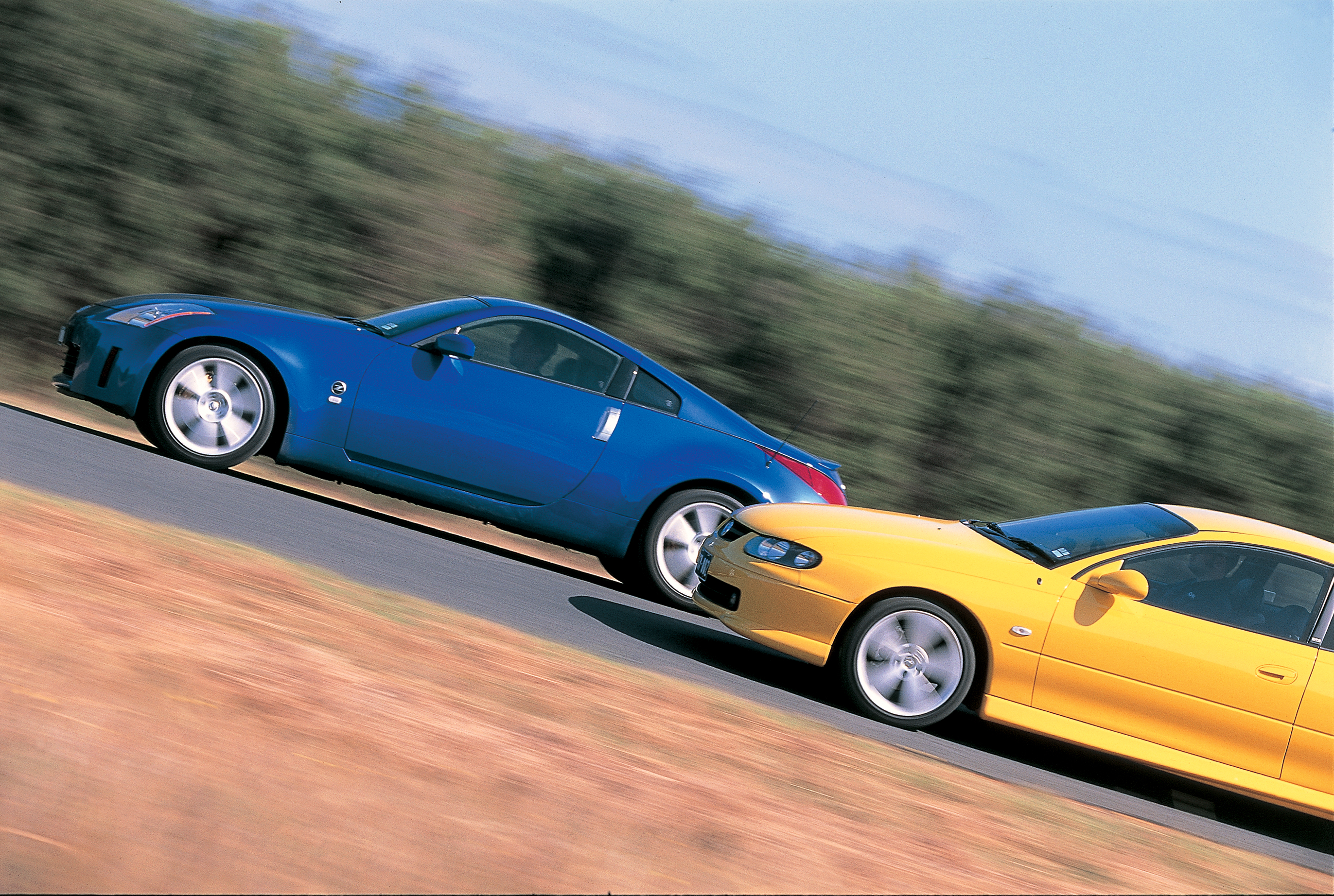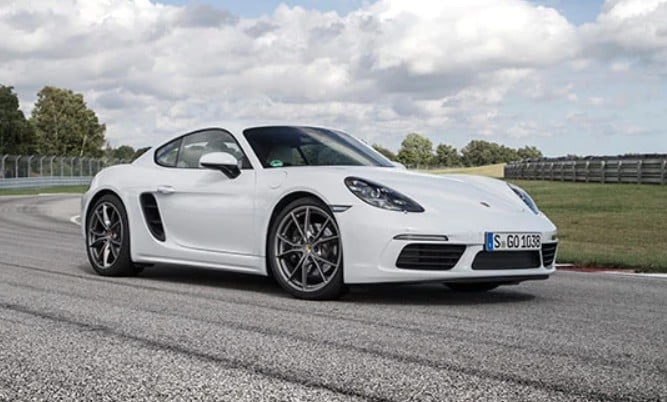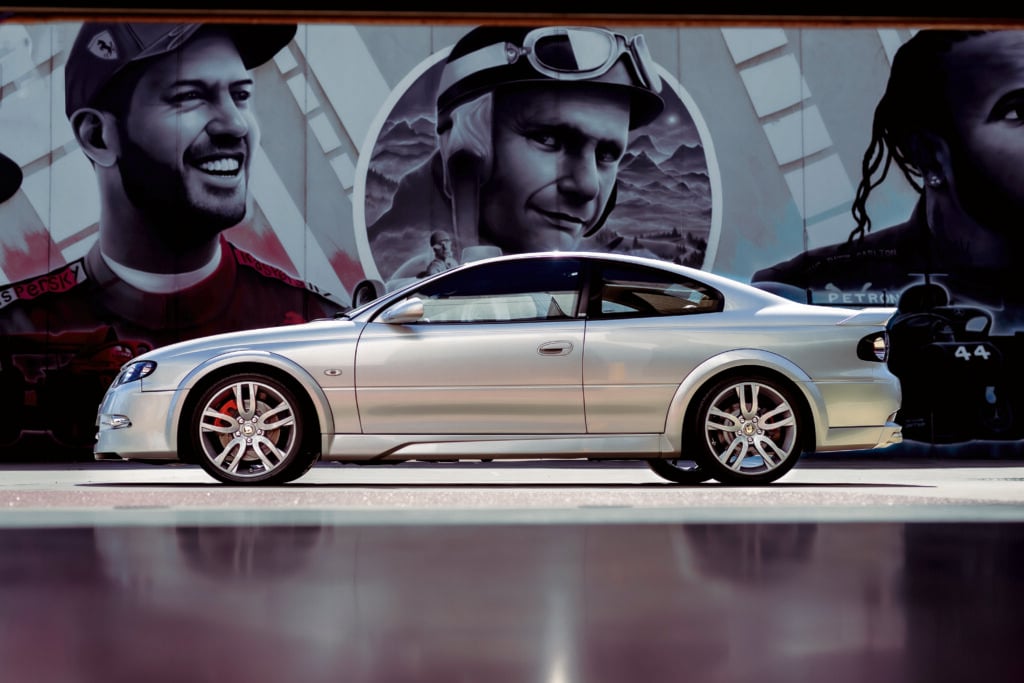Holden and Nissan both have iconic coupes in their trophy cabinet. Today, their successors – the reborn Monaro CV8 and 350Z – are at it again.
This article was first published in the June, 2003 issue of MOTOR
Times, they have a-changed. Back in the ’60s and ’70s, when these iconic badges first appeared, you’d have been charged with heresy had you compared the Datsun 240Z with Holden’s GTS Monaro.
You see, the 240Z was, well, Japanese, and at around $4500 in 1971 it was nearly $1200 – or more than 25 per cent – pricier than the local coupe. And besides, both Ford and Chrysler had two-door muscle cars to go up against the Chev-engined Holden.
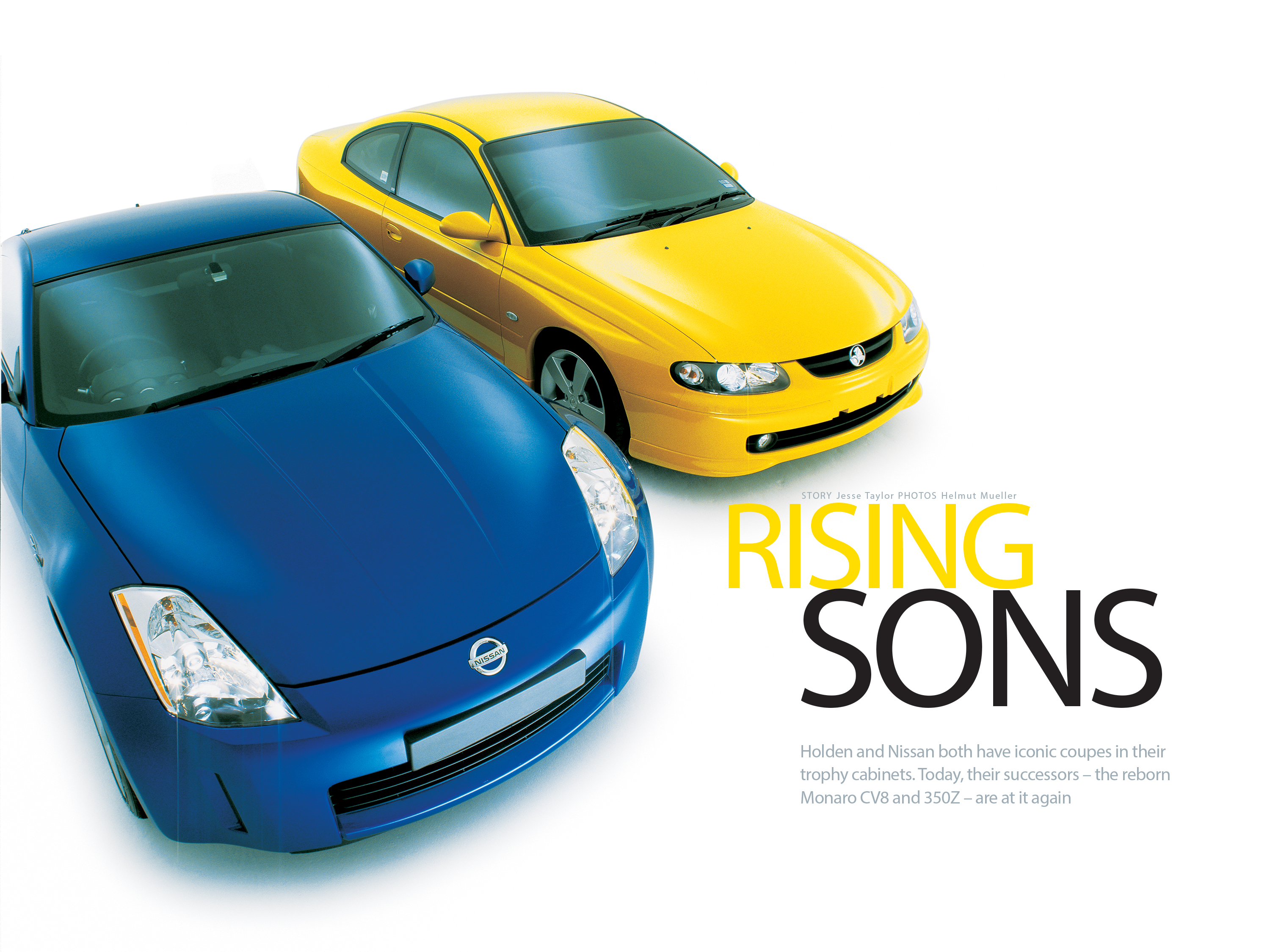
Fast forward 30 years to the second coming of the Monaro. It arrived in late 2001 and recreated a unique niche. Here was a powerful, well equipped, rear-drive coupe at a smidge under $60k. Direct rivals were hard to come by, with the smaller and less lavish Nissan 200SX nearly $20k down the tree. On the other side of the CV8 ledger sat the hard-hitting but crude Ford Mustang at a hard-on-the-stomach 85 grand.
From there you move into Bavarian coupe territory, including the $100k BMW 330Ci and the brilliant M3 nudging $150k. Of course, the Monaro is well out of its weight division by this stage and any comparo would be pointless. Probably the closest competitor on price and equipment, if not philosophy, was the Audi TT 1.8 turbo, wearing a $70,000 sticker. Not that we were sure there was a lot of buyer crossover going on there.
Just 18 months later, though, and the Monaro’s got some company in its once-lonely niche. Mazda’s rotary-powered RX-8 – we reckon it’s a four-door coupe, so no letters, okay? – will be driving off the boat soon, starting at under 60 grand. The funky Mazda will be joined later in the year by Chrysler’s Crossfire. No price has been set by Chrysler Oz, but you’d bet around the $60-70k mark.
But the first foreigner to take the fight to the local coupe hero is Nissan’s 350Z.
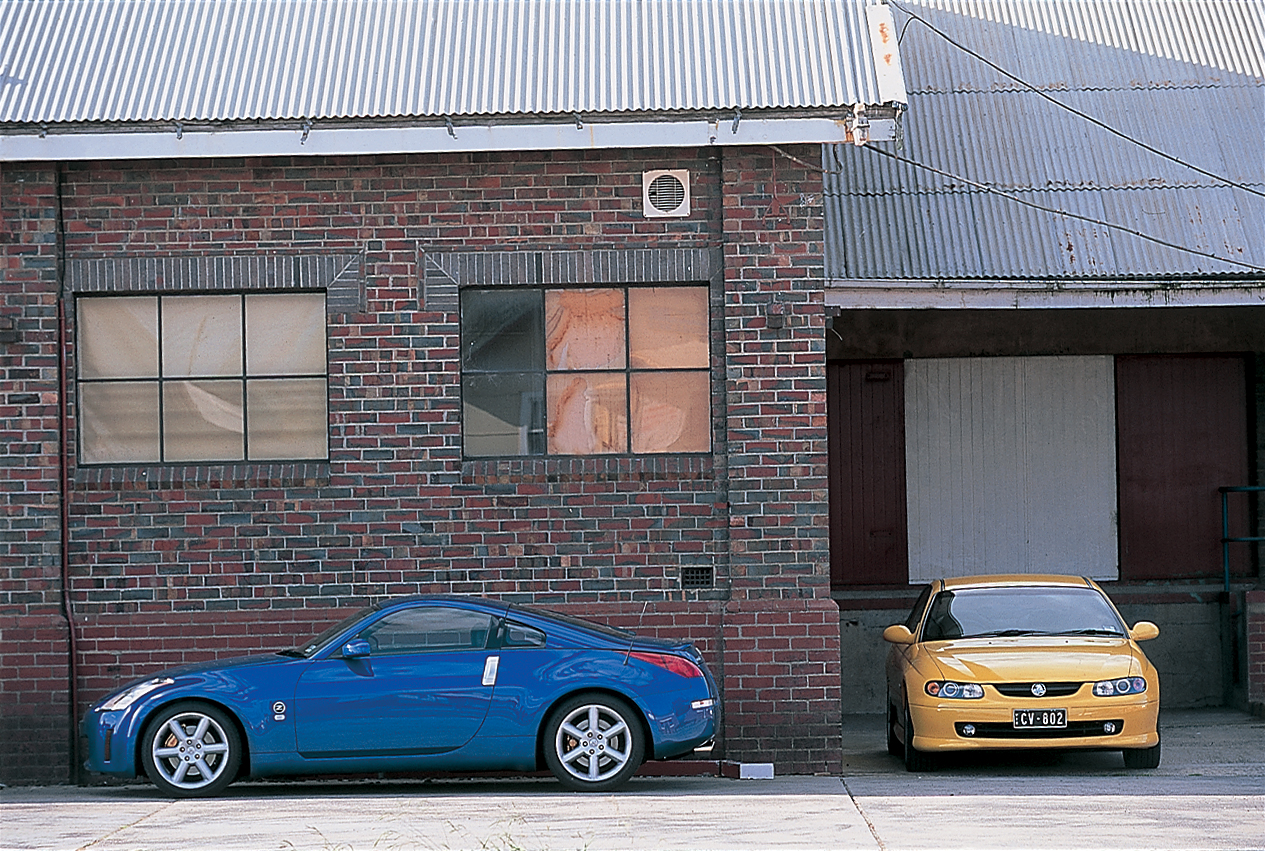
“The slick shift and V6 punch help Zed to some quick numbers – 0-100 km/h in 6.32 and 14.37 for 0-400m”
And if you think all this competition is bad news for Monaro sales, think again. Sure, the foreigners will pinch a few buyers here and there, but they will also attract more potential customers to a very small niche. Speaking of sales, Nissan Australia is walking a pretty conservative line with a prediction of only 800 Zeds this year, split between the $59,990 Touring and $65,990 Track.
Last year Holden shifted just over 4200 Monaros – 97 per cent in CV8 form. This year they are talking somewhere in the ballpark of 2800 Monaros as the inevitable sophomore slump takes hold, but all this competition should keep the coupe market buoyant for a few years yet.
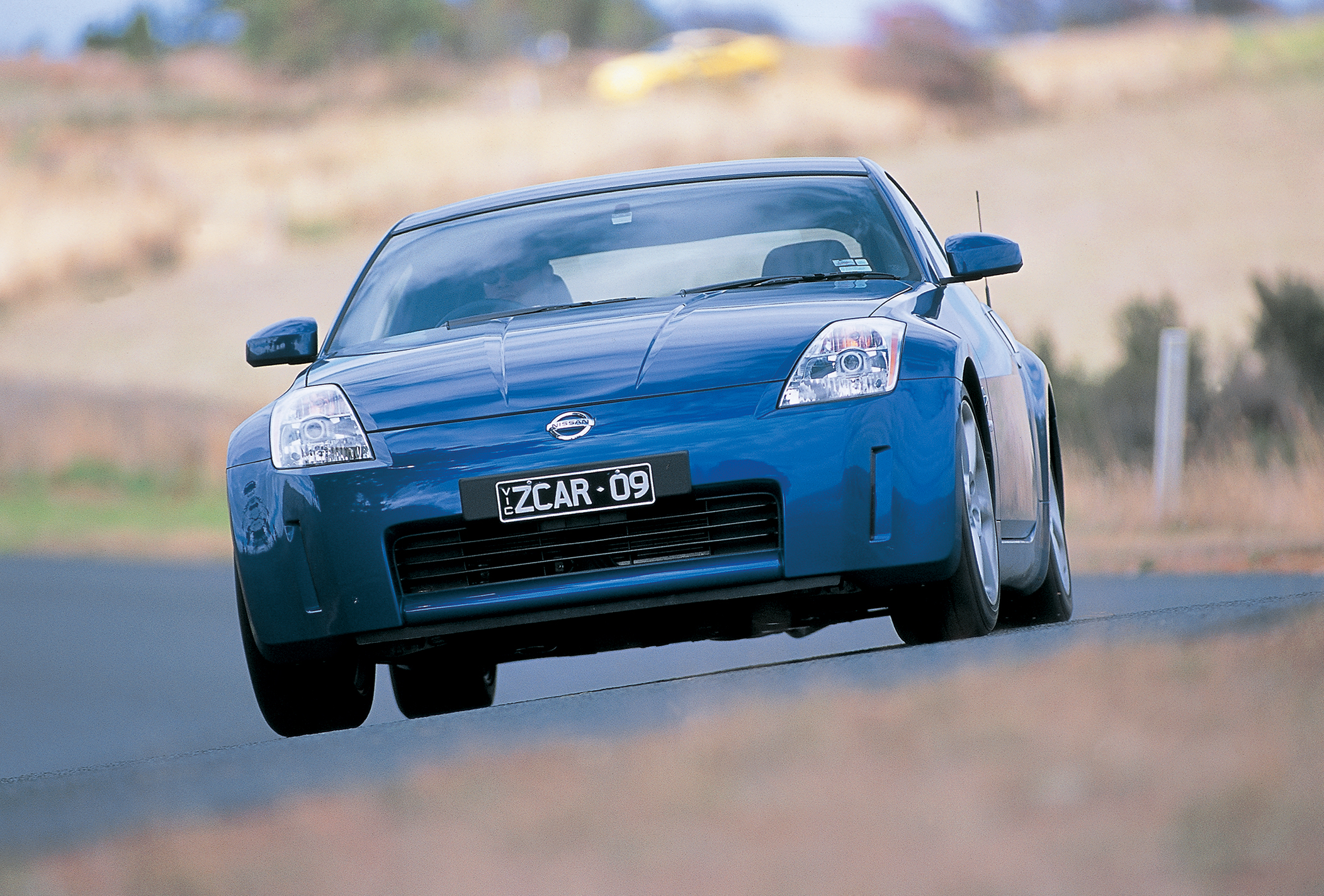
As the new boy on the market, the Zed is certainly flavour of the month, with its looks drawing almost universal praise from Joe Public. Still, it doesn’t match the traffic-stopping hysteria created by the Monaro when it first lobbed in November 2001.
Today, the front of the CV8 looks bland in comparison with the bold Nissan, but the reverse is true of the rears. Not even the addition of the mild aero kit for the Track version of the Zed can match the aggressive elegance of the Munro’s squat rump.
Unfortunately, the interior of the Zed can’t match its stunning wrapping paper, with vast slabs of boring black plastic covering the doors and parts of the dash. The leather seats are supportive, however, and the equipment includes a gun six-disc Bose CD player.
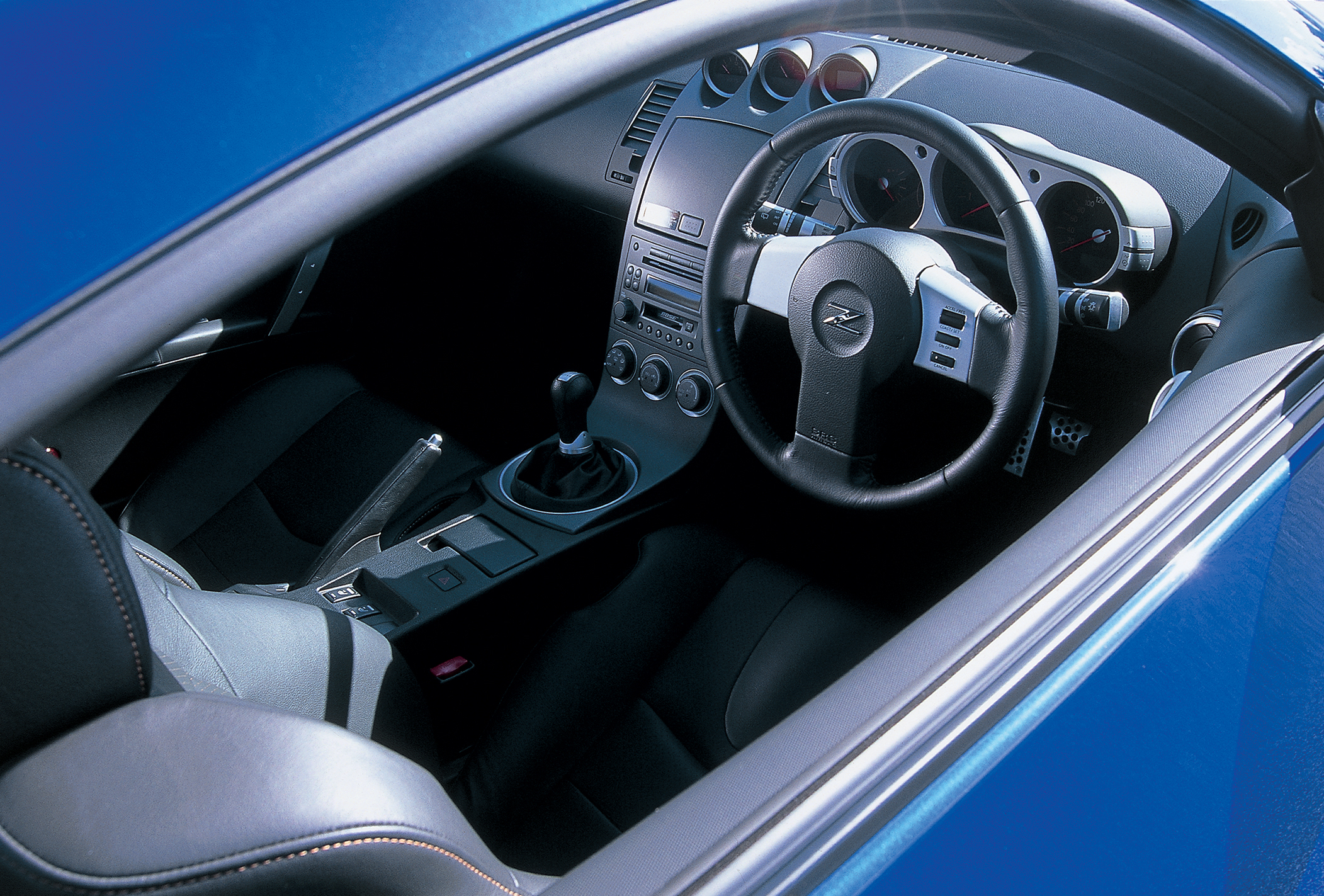
The Munro’s interior offers similar levels of equipment, with leather seats – four to the Nissan’s two – and a 10-disc CD stacker.
Nestling between the Nissan’s flared front guards is a 3.5-litre version of the Maxima’s 3.0-litre V6. The SOHC bent six is good for the Japanese standard maximum 206kW at a lowish 6200rpm and 363Nm at highish 4800 revs. The raw numbers are good but suggest that there is a relatively narrow band between torque and power peaks.
Nothing could be further from the truth. From two grand all the way to the 6600 rpm redline on the centrally mounted tacho there’s seamless power with no peaks or troughs. This linearity, while an easy way to propel a car quickly, can make an engine feel a little flat and lifeless, and this impression is only reinforced by the Zed’s gruff but droning exhaust note.
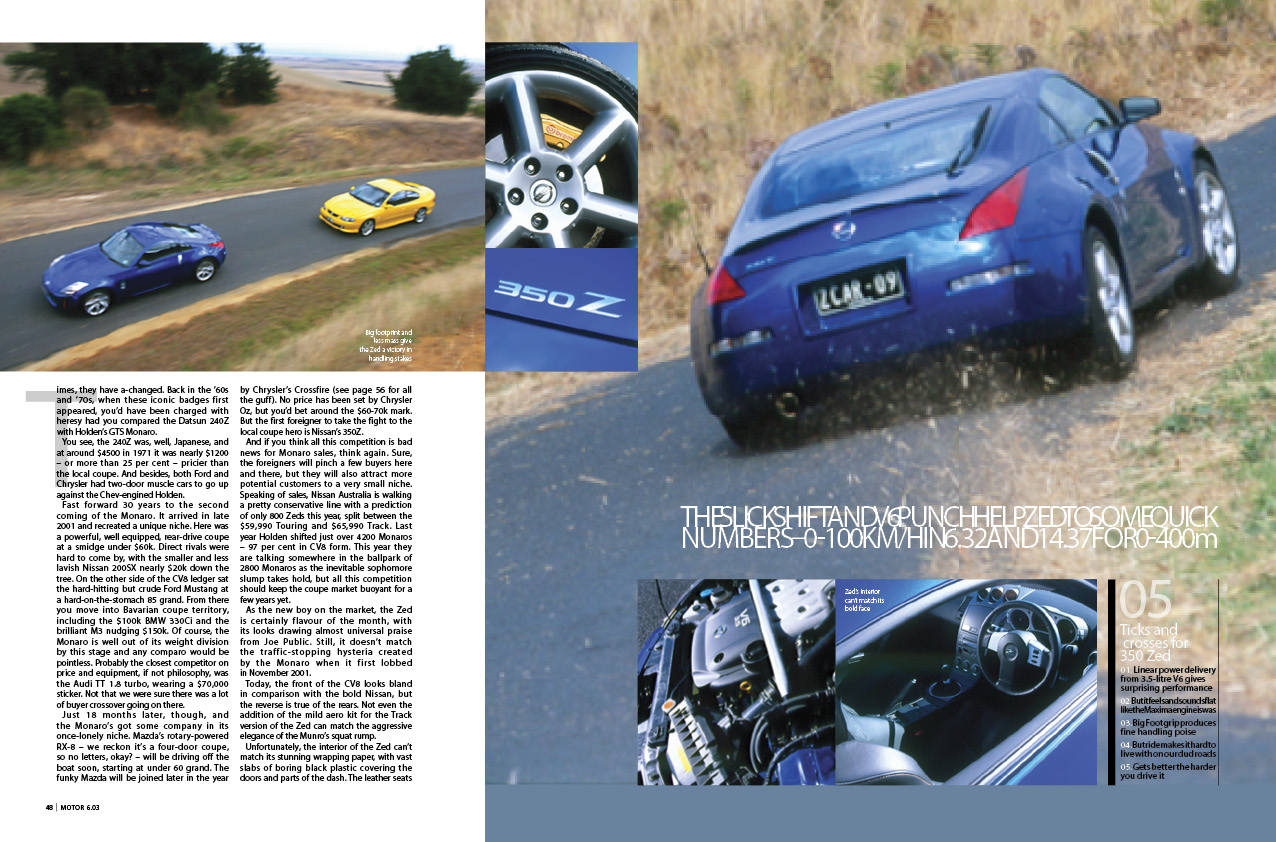
Thankfully the slick six-speed gearbox, no relation to the one found in the Nissan 200SX, breathes life back into the driving experience. A snappy wrist flick is all that’s required to stab the stubby shift lever through the six well spaced ratios. If you can’t be bothered with your own shifts, a five-speed auto is presently available in the Touring but won’t be in the Track until later this year.
It’s funny that the much larger-capacity and comparatively low-tech Gen III V8 feels and sounds sportier than the Nissan’s motor. With 235 kW at 5200 rpm and 465 Nm at 4400 revs, the 5.7-litre V8 kicks some theoretical sand in the face of the Zed.
But the Holden’s 30 kW and 100 Nm advantage is all but negated when you factor in kerb weights. At 1640 kg, the CV8 is the better part of 200 kegs heavier, resulting in near identical weight-to-power ratios of 6.98 kg/kW for the Monaro and 7.05 kg/kW for the Nissan.
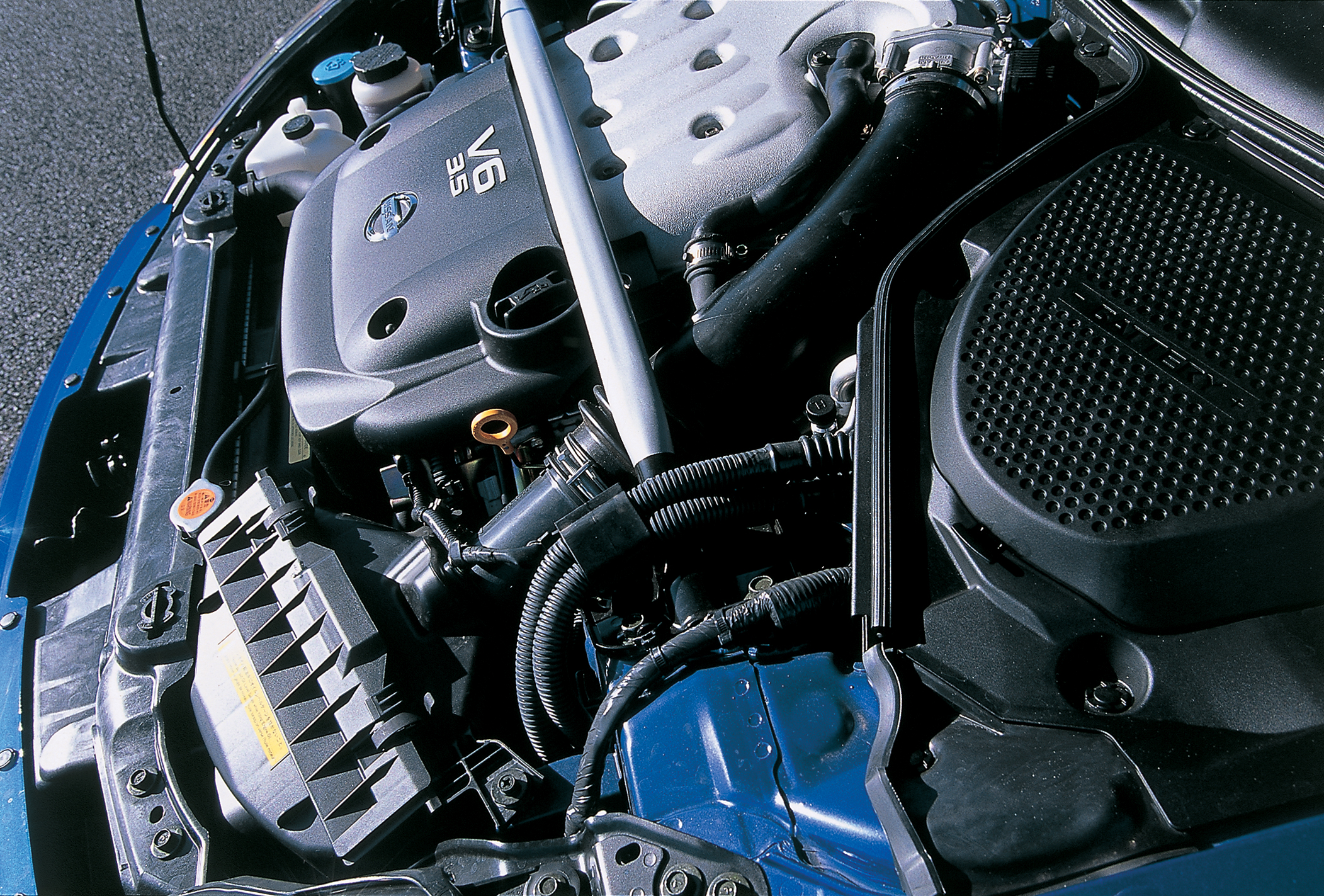
Much has already been written in MOTOR about the six-speed Tremec gearbox found behind Gen IIIs and its reluctance to perform anything resembling a fast shift. The thing is, most of the time you can use the engine’s reserves of power and torque, along with its willingness to rev, and drive around the troublesome ’box. Start by using just the third and fourth plane – forget fifth and sixth unless you’re planning an intergalactic drive – and you should have fewer problems.
It’s when the road tightens and you’ve got to blonk it back to second that you start to wish for the Nissan’s gearbox. A closer- packed pedal box would help no end, too. As it is, there’s no way for any human to heel and toe a downshift. There’s no such dramas in the 350Z, with the metal-capped pedals all within easy reach of my size 12 sneakers.
The Holden also suffers at the hand of its gearbox when it comes time for performance testing. That recalcitrant second-third shift wastes tenths of seconds, not hundredths.
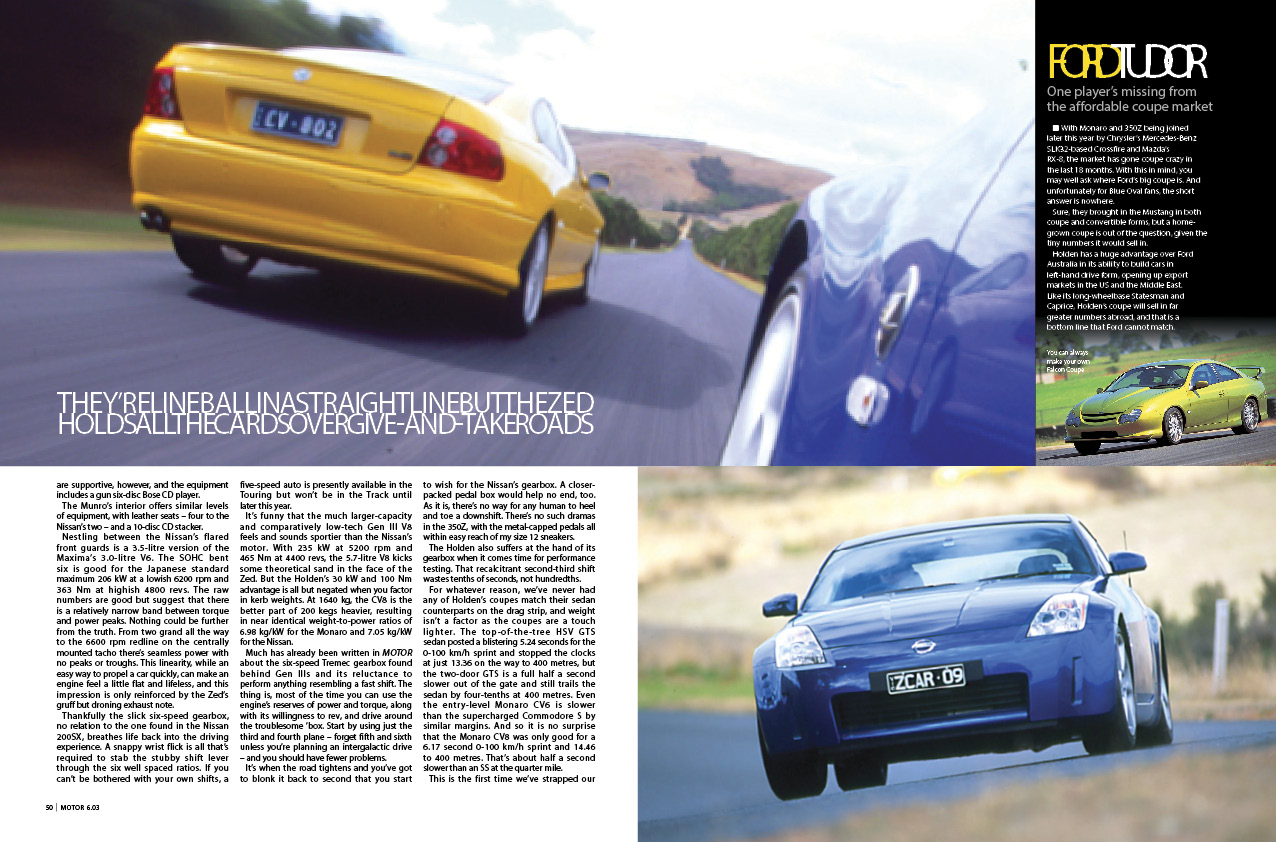
For whatever reason, we’ve never had any of Holden’s coupes match their sedan counterparts on the drag strip, and weight isn’t a factor as the coupes are a touch lighter. The top-of-the-tree HSV GTS sedan posted a blistering 5.24 seconds for the 0-100 km/h sprint and stopped the clocks at just 13.36 on the way to 400 metres, but the two-door GTS is a full half a second slower out of the gate and still trails the sedan by four-tenths at 400 metres.
Even the entry-level Monaro CV6 is slower than the supercharged Commodore S by similar margins. And so it is no surprise that the Monaro CV8 was only good for a 6.17 second 0-100 km/h sprint and 14.46 to 400 metres. That’s about half a second slower than an SS at the quarter mile.
This is the first time we’ve strapped our Correvit to a Zed, and it’s no picnic to get fast numbers out of it. You’ll need more revs than in the Munro to rotate the 18-inch 245/45 Bridgestone Potenzas just enough for the right balance of grip and slip. Once hooked up, things become easier as the slick shift and V6 punch help the Zed to some surprisingly quick numbers: 0-100 km/h in 6.32 seconds and 14.37 for the quarter mile, with a terminal speed right on the old ton.
So they’re line-ball in a straight line, but the Zed holds all the cards over give-and-take back roads when the chassis are really tested. There’s way more grip from the Bridgestones than there is grunt from the V6 engine, to the point where the switchable traction control is scarcely bothered in the dry. Turn-in grip is high and there’s decent feedback through the wheel.
The Monaro also wears Bridgestone Potenzas on its redesigned 18-inch alloys, albeit 235/40s all around. Even with the improvements to Holden’s steering in the last few years, it’s still not the final word on communication. Back to back, the Monaro feels far softer, almost lifting its nose out of the water under hard acceleration and leaning heavily on the outside front Potenza when tipped into a tightening-radius corner.
The thing with the Zed is that it gets better the harder you drive it. Anything below about six-tenths and you probably won’t understand what all the fuss is about. It’s not until you really dig below the Zed’s surface that it starts to shine.

So where does the Nissan’s ability come from? The Zed is nearly half a metre shorter than the Monaro but loses out on wheelbase by just 139 mm. Not only that, but track widths are also in the same ballpark. The 350Z’s huge footprint and advantage at the weighbridge deliver a handling poise the big Munro cannot hope to match.
The trade-off for the Zed’s sharper handling is a firmer ride, and over coarse tarmac the cabin is filled with a drumming that is all but absent from the CV8.
Dive into a series of switchbacks, however, and you’d better be wary of the Monaro’s brakes. With 296 mm discs and twin-piston calipers up front and 286 mm solid discs squeezed by single-piston calipers down back, they’re puny. Tasked with slowing such a powerful and hefty car, the brakes are prone to fade.
The middle pedal goes soggy for the first few inches of travel and stopping distances grow. Your confidence drops and there’s nothing to do but back off and wait until they cool down and come back. It’s this hot and bothered approach that really hurt the CV8 in the final reckoning of PCOTY.
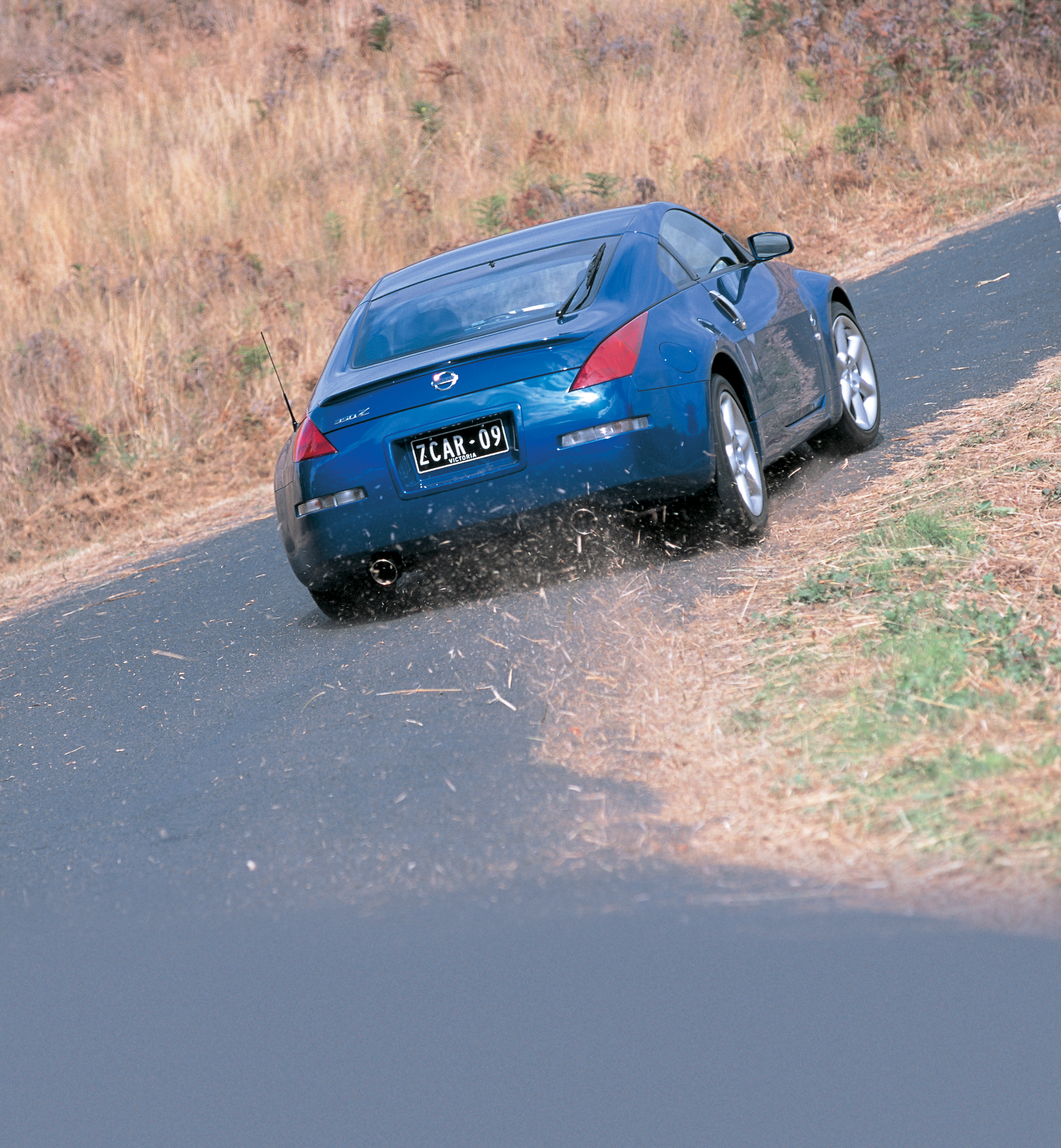
Not only are the Brembos of the 350Z Track bigger in swept area and clamping power – 324 mm front discs with four-piston calipers – but they are also stopping a 200 kg lighter car. And, like the handling, that makes a lot of difference.
Both coupes represent excellent value for money and both will deliver street cred way above the sticker price. The Zed, particularly in Track form, may be too hard to live with for some buyers, just like the Monaro’s more relaxed nature mightn’t be enough for some adrenaline junkies. In other words, you’re spoilt for choice, and it’s only going to get harder when the RX-8 and Crossfire arrive.
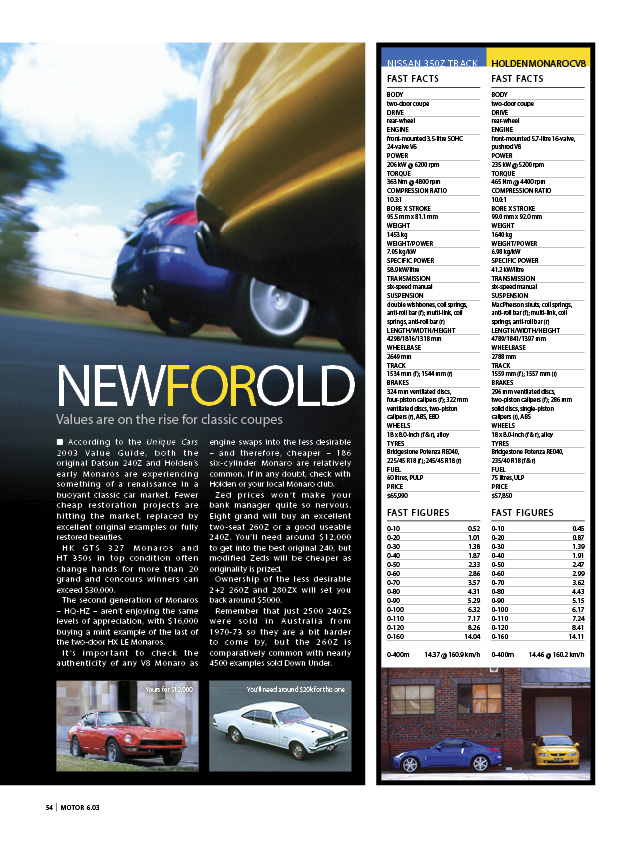
New For Old
Values are on the rise for classic coupes
According to the Unique Cars 2003 Value Guide, both the original Datsun 240Z and Holden’s early Monaros are experiencing something of a renaissance in a buoyant classic car market. Fewer cheap restoration projects are hitting the market, replaced by excellent original examples or fully restored beauties.
HK GTS 327 Monaros and HT 350s in top condition often change hands for more than 20 grand and concours winners can exceed $30,000.
The second generation of Monaros – HQ-HZ – aren’t enjoying the same levels of appreciation, with $16,000 buying a mint example of the last of the two-door HX LE Monaros.
It’s important to check the authenticity of any V8 Monaro as engine swaps into the less desirable – and therefore, cheaper – 186 six-cylinder Monaro are relatively common. If in any doubt, check with Holden or your local Monaro club.
Zed prices won’t make your bank manager quite so nervous. Eight grand will buy an excellent two-seat 260Z or a good useable 240Z. You’ll need around $12,000 to get into the best original 240, but modified Zeds will be cheaper as originality is prized.
Ownership of the less desirable 2+2 260Z and 280ZX will set you back around $5000.
Remember that just 2500 240Zs were sold in Australia from 1970-73 so they are a bit harder to come by, but the 260Z is comparatively common with nearly 4500 examples sold Down Under.
(Ed’s note: These 2003 values make for pretty depressing reading in 2021, don’t they?)
We recommend
-
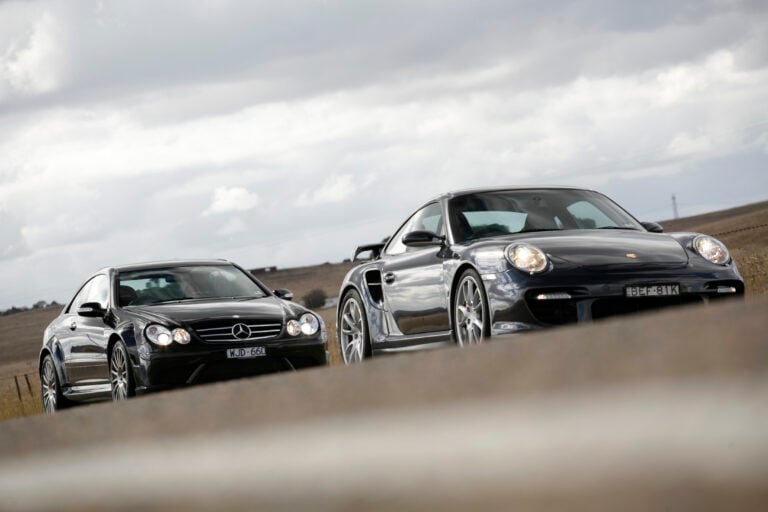 Features
FeaturesWhat happened in MOTOR 13 years ago? We thrashed the 911 GT2 and CLK63 Black on road and track!
Throwback to our day with 763kW and $736,560 worth of dark fast metal
-
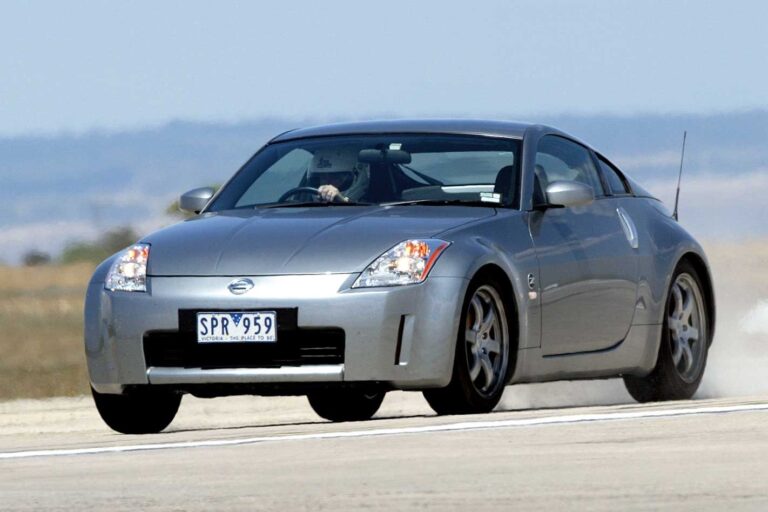 Performance COTY
Performance COTYPerformance Car of the Year 2004 - 4th place - Nissan 350Z Track: classic MOTOR
Though down on points, favour from the judges hoisted the 350Z into a lofty finish
-
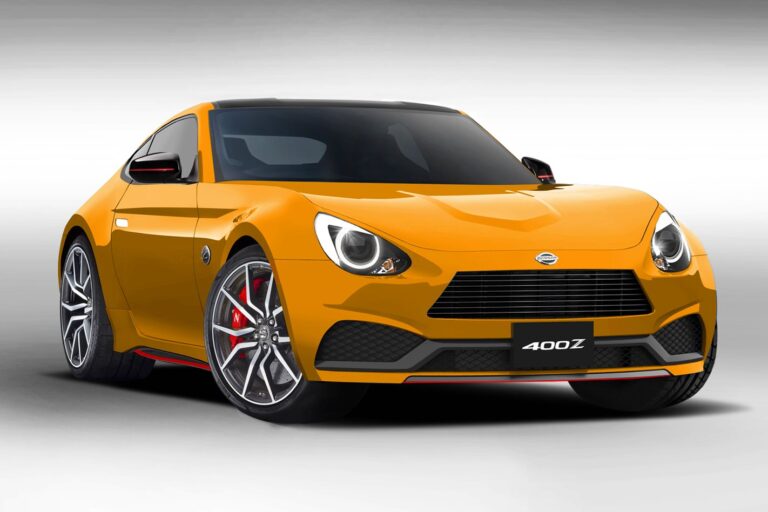 Features
FeaturesEverything we know about the 2021 Nissan 400Z
Will Nissan’s new Zed car hero be a true Supra slayer?

